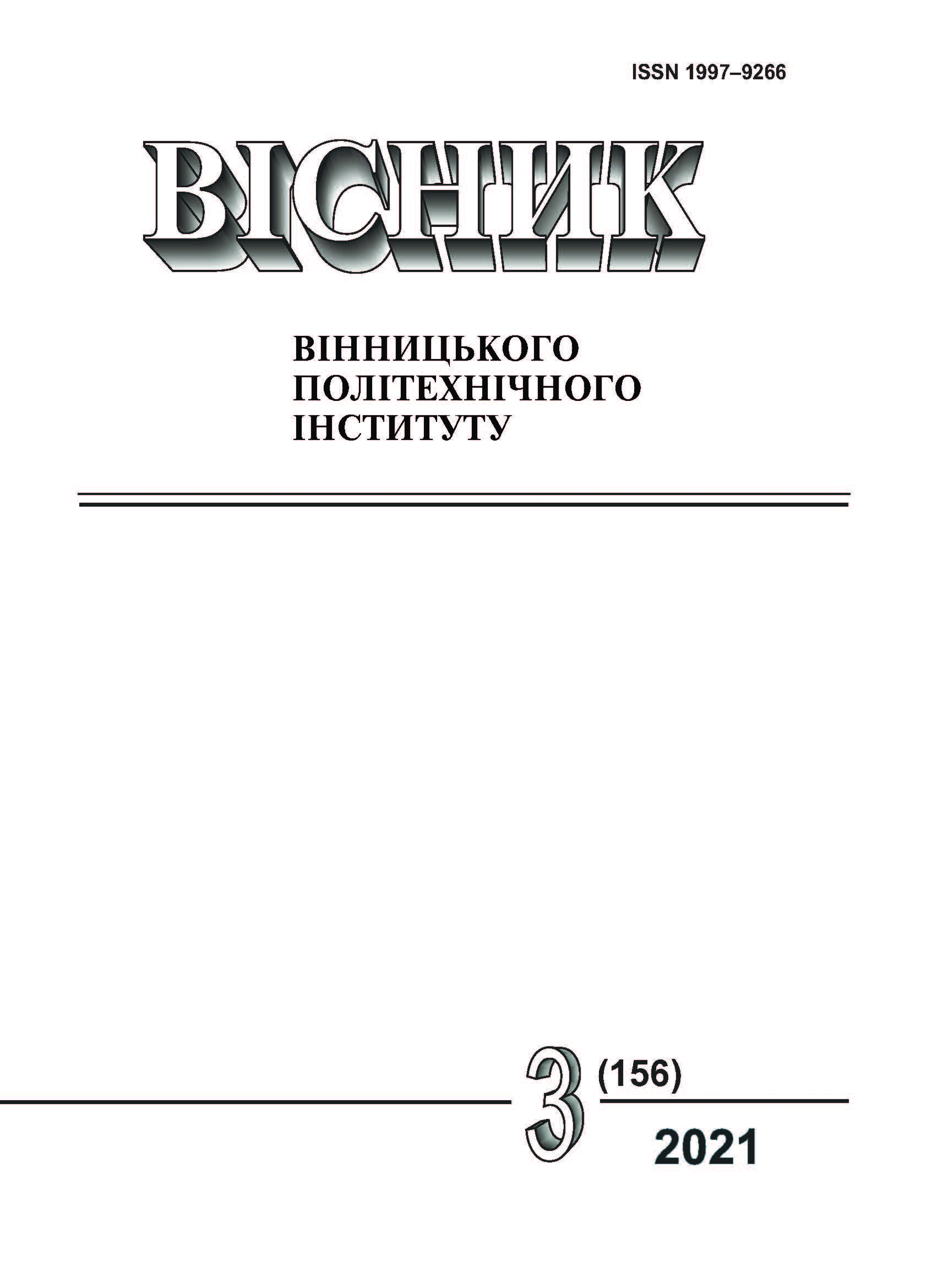Assessment of the Influence of External Factors on the Parameters of Bistable Switching Devices Based on Amorphous Semiconductors
DOI:
https://doi.org/10.31649/1997-9266-2021-156-3-113-119Keywords:
radiation resistance, amorphous semiconductors, delay time, mobility of charge carriers, threshold voltageAbstract
The influence of temperature and radiation on the threshold voltage and switching delay time of the switching device based on ChGS is evaluated. It is shown that when the temperature changes from 250 to 350 oК, the threshold voltage changes within 5 mV, and the temperature voltage coefficient is about 0,03 %/deg, which is much less compared to similar devices based on single-crystal semiconductors.
Analytical expressions were obtained and a study of the dependence of the switching delay time on the temperature and density of capture traps near the Fermi level was performed.
The results of studies of the dependence of the switching delay time on the temperature show that when the temperature changes from 250 to 350 К, the delay time changes by 0,35 ps, and the temperature coefficient of the delay time does not exceed 0,42 %/deg. Moreover, with increasing mobility of the charge carriers, the delay time decreases. The study of the dependence of the switching delay time on the density of the capture traps showed that this dependence is practically linear and when the density of the capture traps increases by an order of magnitude, the delay time also changes by an order of magnitude.
Analytical dependences of charge carrier mobility and switching delay time on neutron flux density are obtained. It is shown that the change in neutron flux density up to 1016 N/cm2 the mobility of charge carriers slowly decreases from 10–2 to 0,99 10–2 cm2/V·s, and with a further increase in the dose to 1018 N/cm2 the mobility decreases twice and is 0,5 10–2 cm2/V·s. The switching delay time with increasing irradiation dose from 1010 to 1016 N/cm2 increases from 26,2 ns to 26,8 ns, and with a further increase in the neutron flux density, the delay time increases rapidly and is 57 ns at a neutron flux density of 1018 N/cm2. The results of the research indicate that switching devices based on chalcogenide glassy semiconductors are characterized by higher radiation resistance in comparison with devices based on single-crystal bipolar semiconductor components, the amplifying properties of which change at a neutron flux to 1012 N/сm2 decrease more than twice.
References
А. Н. Белоус, В. А. Солодуха, и С. В. Шведов, Космическая электроника, моногр. в 2 ч. Москва, РФ: Техносфера. 2015, 696 с., 488с.
Jeffrey Prinzie, Karel Appels, and Szymon Kulis, “Optimal Physical Implementation of Radiation Tolerant High-Speed Digital Integrated Circuits in Deep-Submicron Technologies,” Reprinted from: Electronics 2019, 8, 432. https://doi.org/10.3390/electronics8040432 .
Kyungsoo Jeong, Duckhoon Ro, Gwanho Lee, Myounggon Kang, and Hyung-Min Lee, “A Radiation-Hardened Instrumentation Amplifier for Sensor Readout Integrated Circuits in Nuclear Fusion Applications,” Reprinted from: Electronics 2018, 7, 429. https://doi.org/10.3390/electronics7120429 .
Bjorn Van Bockel, Jeffrey Prinzie and Paul Leroux, “Radiation Assessment of a 15.6 ps Single-Shot Time-to-Digital Converter in Terms of TID,” Reprinted from: Electronics 2019, 8, 558. https://doi.org/10.3390/electronics8050558 .
H.-S. Philip, et al., “Wong Phase Change Memory,” Proceedings of the IEEE, vol. 98, no. 12, pp. 2201-2227, 2010.
Bipin Rajendran, et al., Phase change memory technology, IBM Research, 2009. [Electronic resource]. Available: http://www.itrs.net/ITWG/Beyond_CMOS/2010Memory_April/Proponent/Nanowire%20PCRAM.pdf .
Н. А. Богословский, и К. Д. Цэндин, «Физика эффектов переключения и памяти в халькогенидных стеклообразных полупроводниках,» Физика и техника полупроводников, т. 46, вып. 5, с. 577-608, 2012.
Ю. В. Ануфриев, «Температурная независимость напряжения включения ячеек энергонезависимой памяти на основе халькогенидных полупроводников,» Вестник Московского энергетического института, № 6, с. 144-147, 2007.
В. М. Кичак, І. В. Слободян, «Дослідження зміни часу перемикання комірки пам’яті на базі ХСН від товщини плівки та перенапруження у зразку,» Міжнародний науково-технічний журнал, Вимірювальна та обчислювальна техніка в технологічних процесах, № 2 (40), с. 67-70, 2012. ISSN 2219-9365.
А. П. Лазар, и Ф. П. Коршунов, «Моделирование радиоционной стойкости элементов логических КМОП интегральных микросхем,» Доклады БГУИР, № 5(75), 2013.
Alan B. Grebene, Bipolar and MOS Analog Integrated Circuit Design. Reprinted from: Wiley-Interscience, p. 912, 1984.
Downloads
-
PDF (Українська)
Downloads: 135
Published
How to Cite
Issue
Section
License

This work is licensed under a Creative Commons Attribution 4.0 International License.
Authors who publish with this journal agree to the following terms:
- Authors retain copyright and grant the journal right of first publication.
- Authors are able to enter into separate, additional contractual arrangements for the non-exclusive distribution of the journal's published version of the work (e.g., post it to an institutional repository or publish it in a book), with an acknowledgment of its initial publication in this journal.
- Authors are permitted and encouraged to post their work online (e.g., in institutional repositories or on their website) prior to and during the submission process, as it can lead to productive exchanges, as well as earlier and greater citation of published work (See The Effect of Open Access).





